- Author Matthew Elmers [email protected].
- Public 2023-12-16 21:49.
- Last modified 2025-01-24 09:17.

- My angel, this is a triumph, I could dispose of a dozen Cezannes, without leaving the place!
- Well, you know, and one is more than enough …
(How to steal a million?)
Art and history … We had such a cycle, where it was told about weapons drawn by artists in certain paintings. And the stories of these canvases and what was or was not depicted on them were perceived very positively. But recently, at VO, the painting "The Cossacks" was used as an illustration (which everyone knows under a different name, namely "The Cossacks are writing a letter to the Turkish Sultan") - a picture of our great artist Ilya Efimovich Repin. And, recall, the painting is huge - 2, 03 × 3, 58 m, and he worked on it from 1880 to 1891. However, I am not going to repeat either the essence of the event reflected on it, nor … criticize the unhistorical nature of the weapon depicted on it. By the way, the picture was called "historically unreliable" at the time of its release. In my opinion … it is not clear why. In any case, no matter who and whoever says what, the fate of this canvas was more than successful. After a resounding success at a number of exhibitions in Russia, as well as abroad (in Chicago, Budapest, Munich and Stockholm), the painting in 1892 was bought by Emperor Alexander III for 35 thousand rubles. She remained in the royal assembly until 1917, and after the revolution she ended up in the Russian Museum.
But if everything is correct in the picture, one of the readers will probably ask, then what can you write about? But just about what is true, and also about how the artist could make it even more reliable. In general, I am amazed at how such pictures were painted at that time. Well, is this a conceivable thing: 11 years to write one, even such a large canvas. And most importantly: after all, all the types that Repin put on this canvas … were painted by him from nature! Well, could he not photograph the person he liked, and then write from the photograph? Or, in general, to plant a bunch of sitters, take pictures of them in different versions and then sit and paint them in different versions, so that every museum and gallery would get it. No, this is our eternal striving for absolute perfection - it is, of course, "that", and a modern person is a little annoying. By the way, the famous artist V. E. Borisov-Musatov painted like that. I took pictures of people and landscapes with the Kodak camera and then made pictures from the photos, which, by the way, also hang in the Russian Museum. But this is so, by the way.
The main thing that will be discussed today is the weapon depicted in the picture. Moreover, we have the opportunity to examine many of its samples in detail, although not all of them are seen equally well in the picture.
So, first of all, we note the reliability of everything depicted. Here Repin simply masterfully transferred to the canvas samples of weapons from the time that he reflected.
Let's start with the outermost shape on the left. This man stands with his back to us, and we do not see his face, but we see his gorgeous - you cannot find another word here - a Turkish flintlock rifle, the butt of which is trimmed with ivory.
There are such guns in a number of museums, but today we will turn to the collections of just one: the Metropolitan Museum of Art in New York. And it’s a pity that there was no Internet in the era of Repin. I could, without going anywhere and without leaving home, take it, and write … Moreover, the museum's collections have something to choose from. No, it is clear that we have the Armory, the Artillery Museum, and the State Historical Museum, but … as if there was too much from him for "nature" was not asked. Whereas on the Internet everything is free - take it and use it!
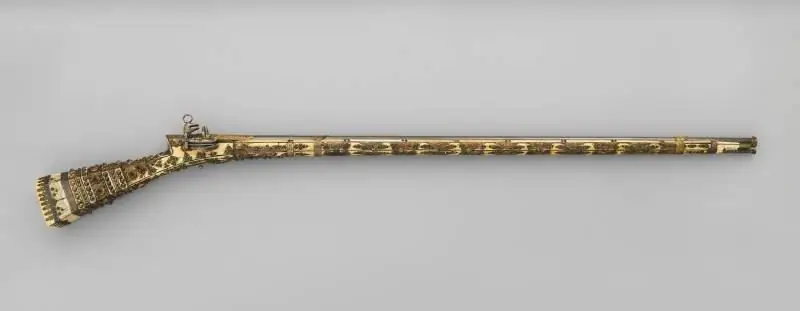
The second after the first is also a "man with a gun." It is known about him that this young man was written in St. Petersburg from the son of Varvara Ikskul-Gildenbandt, and he was the great-nephew of the composer Mikhail Glinka and a chamber-page. And it seems that in the picture it is Andrii - the very youngest son of Taras Bulba, whom he gave birth and killed, fulfilling his patriotic duty. True, he has a gun for some reason in a case. An interesting historical fact, but if I were in the place of the maestro, I would have painted him a Turkish musket, only decorated in a different way.
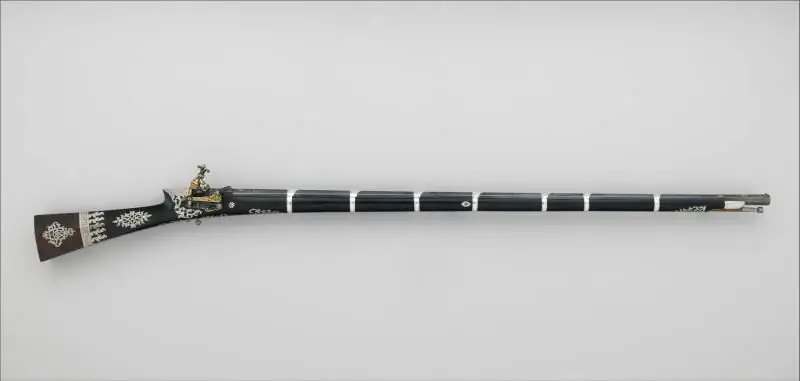
True, he also has a pistol next to the gun. And also Turkish. Well, the Turks made good weapons then. And decorated it richly. Although sometimes quite tasteless. With a sense of proportion, they were clearly … not very. The one in the photo below is about 70-90 years older, but the Turks' pistols have not changed very much during this time.
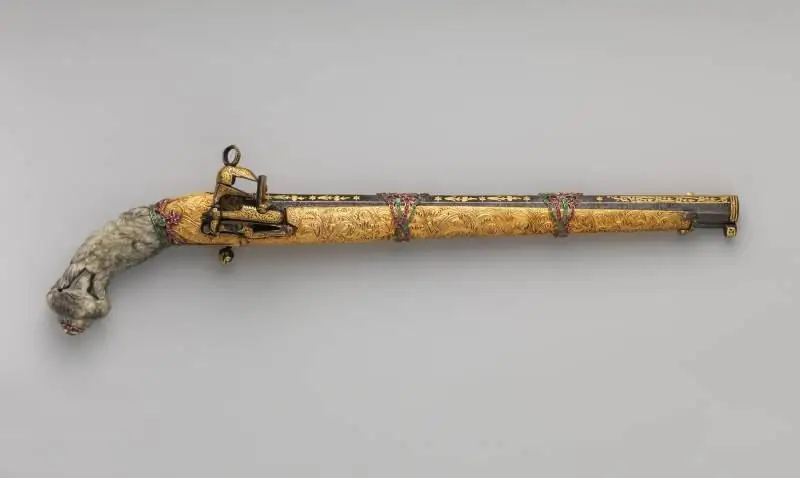
Further out of the armed only a laughing fat man in red. It is believed that he wrote it from the professor of the Petersburg Conservatory Alexander Ivanovich Rubets, a descendant of the Polish gentry. But there is also such a version that the journalist Gilyarovsky posed for the painter, so who exactly Repin immortalized as an example of this Cossack has not been established. However, it is important for us that a saber hangs on his belt. It is written out very clearly. And it looks like this …
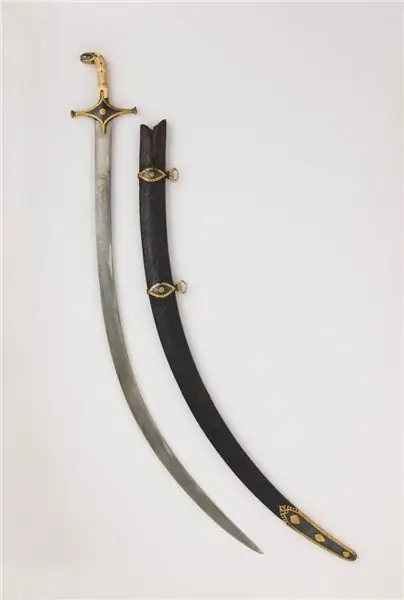
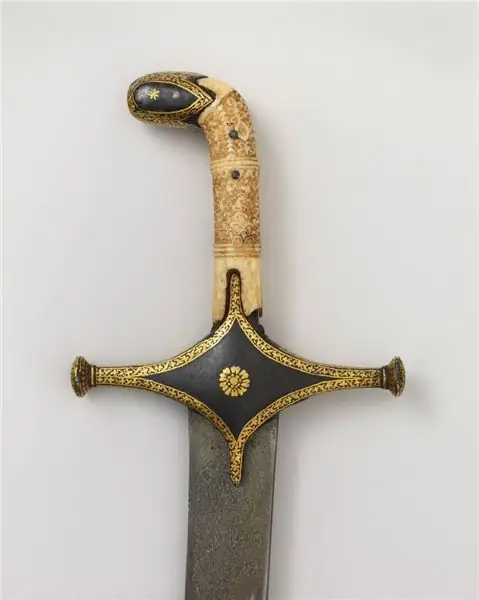
And it is not surprising that the saber is Persian. First, the Cossacks went to Persia "for zipuns" too. And secondly, the arms trade in the East has always existed. And the Turkish trophy could well turn out to be a Persian or Indian work.
But what is very interesting to me personally - were there among the Cossack trophies … straight Turkish broadswords? It is generally accepted in our country that since a Turk means a crooked saber. But in fact, it was the Turkish sabers that had a relatively small bend (the saber fell), and that the Turkish cavalry also used broadswords with blades of European production. Well, for example, such as this one. In time, everything just fits, but whether they were or not - history does not tell us this.
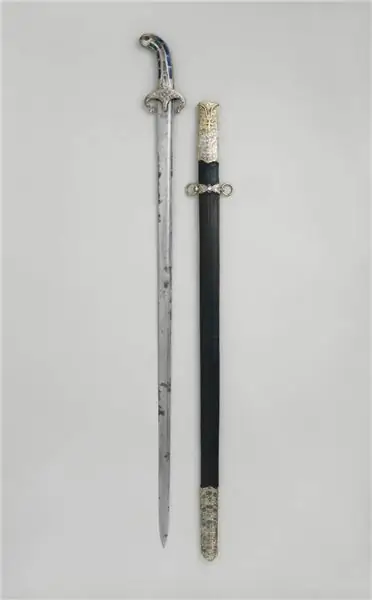
By the way, the fact that the Turks used Indian sabers is undoubtedly. But their handles, originally Indian, were usually replaced by their own, Turkish. They were painfully unusual. And so - a wonderful quality blade and a traditional handle, what could be better?
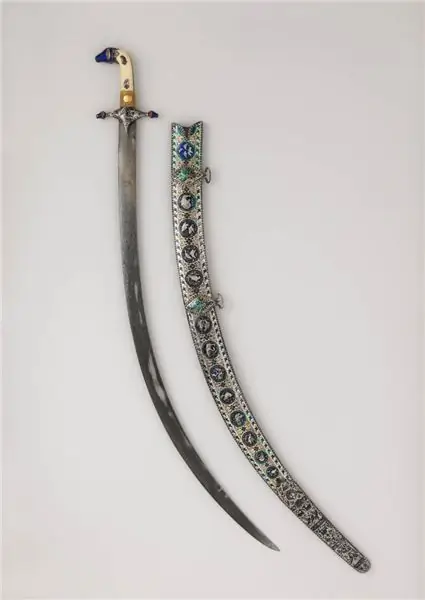
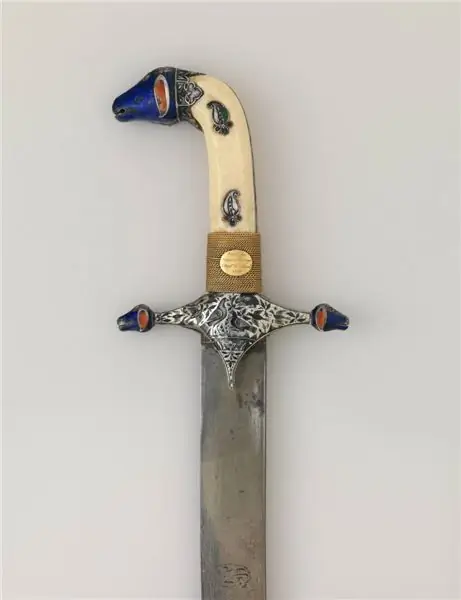
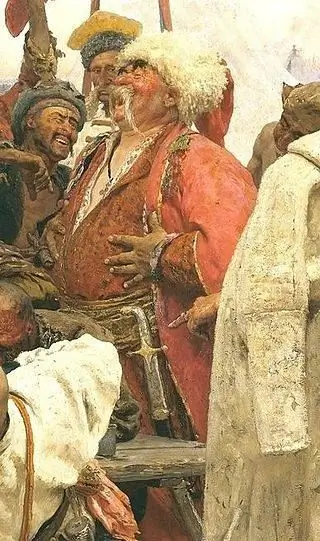
Another saber of a bald Cossack, collapsed on a barrel. This characteristic dome was written from the chief-gofmeister Georgy Petrovich Alekseev, and he did not expect this trick and was very offended by Repin. However, the artist painted him a noble arsenal: a gun, and a saber, and a horn with gunpowder - an important part of the military equipment of those years.

However, a horn with gunpowder is, although typical, but not the most beautiful option. The fact is that not only horns were used as powder flasks, but also specially made powder flasks. And it was precisely such a powder flask that Repin masterfully painted on the belt of a Cossack naked to the waist. It was believed that in such a "naked form" the Cossacks sat down to play cards and would not be able to cheat and hide cards up their sleeves. He has a very beautiful powder flask - again, clearly oriental work. By the way, there is something similar in the exposition of the Metropolitan Museum. Moreover, Indian work …
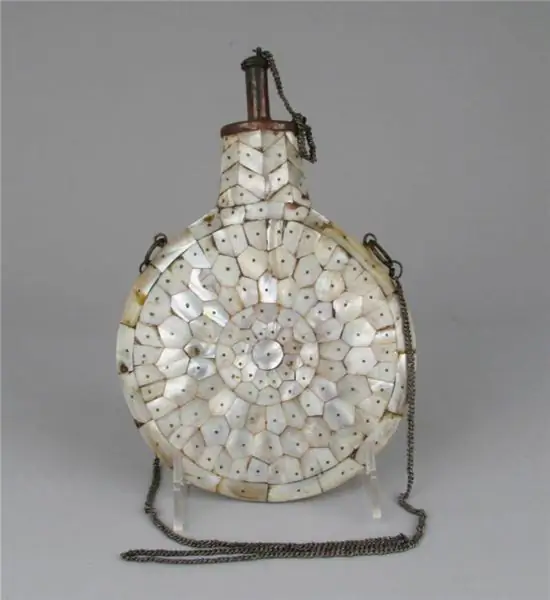
And finally, this one. Again, the Cossack's weapon on the barrel is such a small detail next to the gunpowder horn. But this is nothing more than the head of a brush - a weapon of the common people, but effective in skillful hands.
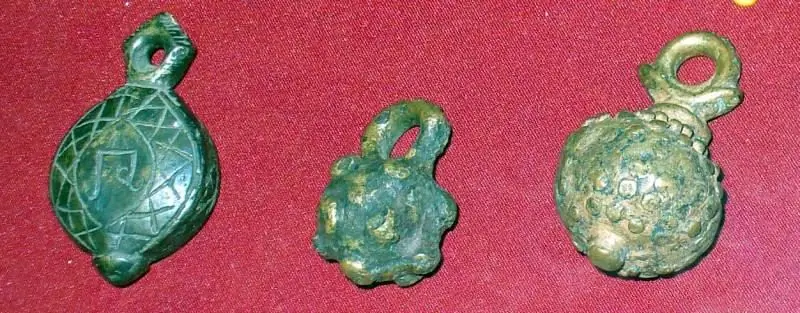
However, there is another example of Turkish weapons, which is not in the picture. This is a scimitar. But … although they fell into the hands of the Cossacks, however, most likely they were not used. Since the majority of Turkish scimitars had a whimsical handle. And one had to be able to use such a weapon. So it is understandable why there is no scimitar "with ears" on the handle on the canvas. But it could well have been a scimitar with a handle of a more familiar look, and why not take such a trophy? But … this weapon was not typical. Although there are remarkable examples of scimitars with handles of a completely European look. For example, this one …
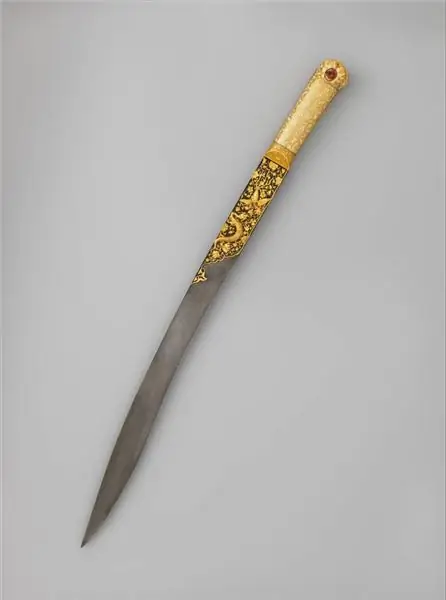


Well, we have considered all the weapons of the Repinovsky Cossacks, and what is the conclusion? Simple - that it is precisely the weapon in the paintings that you need to draw, and where do you get the initial samples for this - in the Kremlin Armory or in the New York Metropolitan Museum - it does not matter at all.






